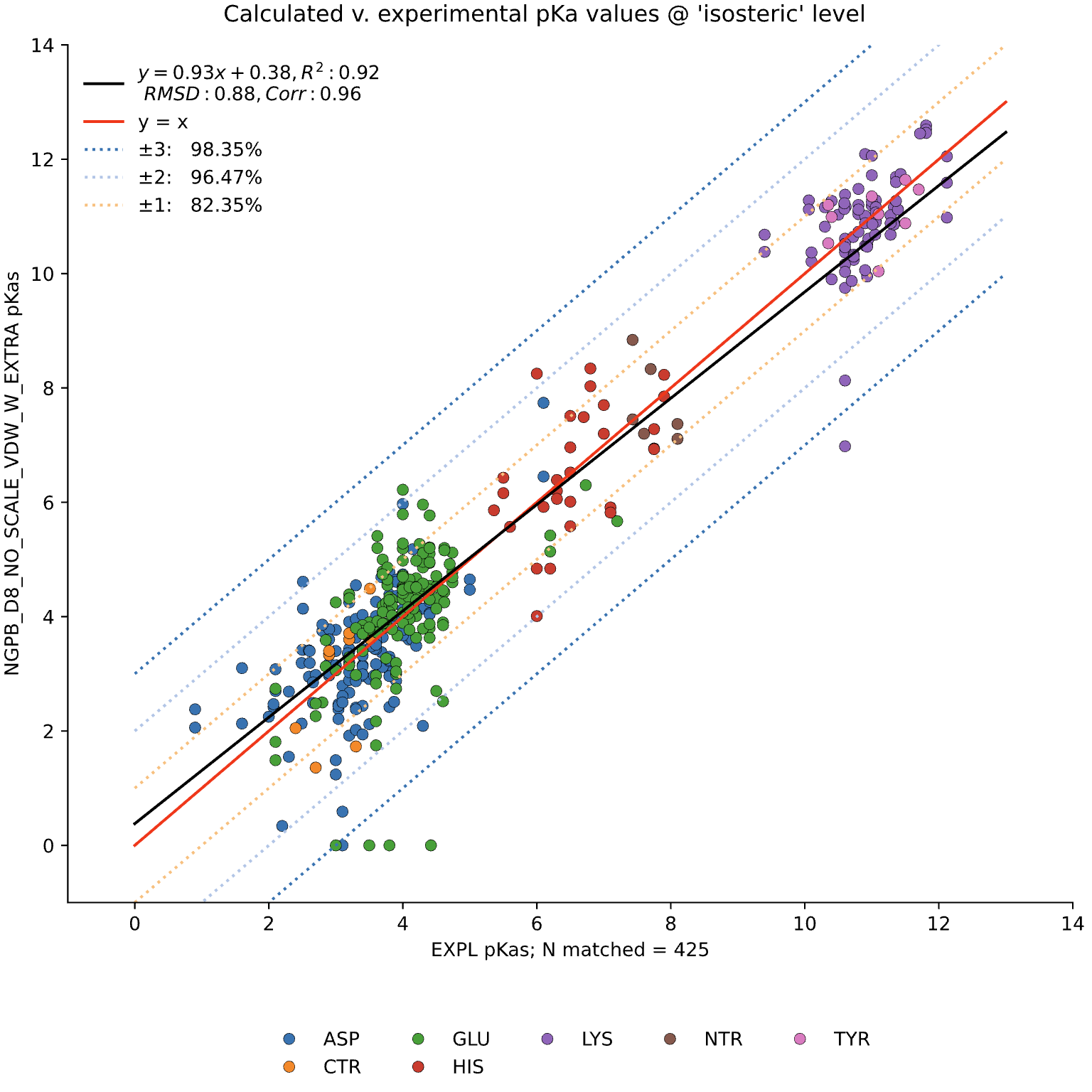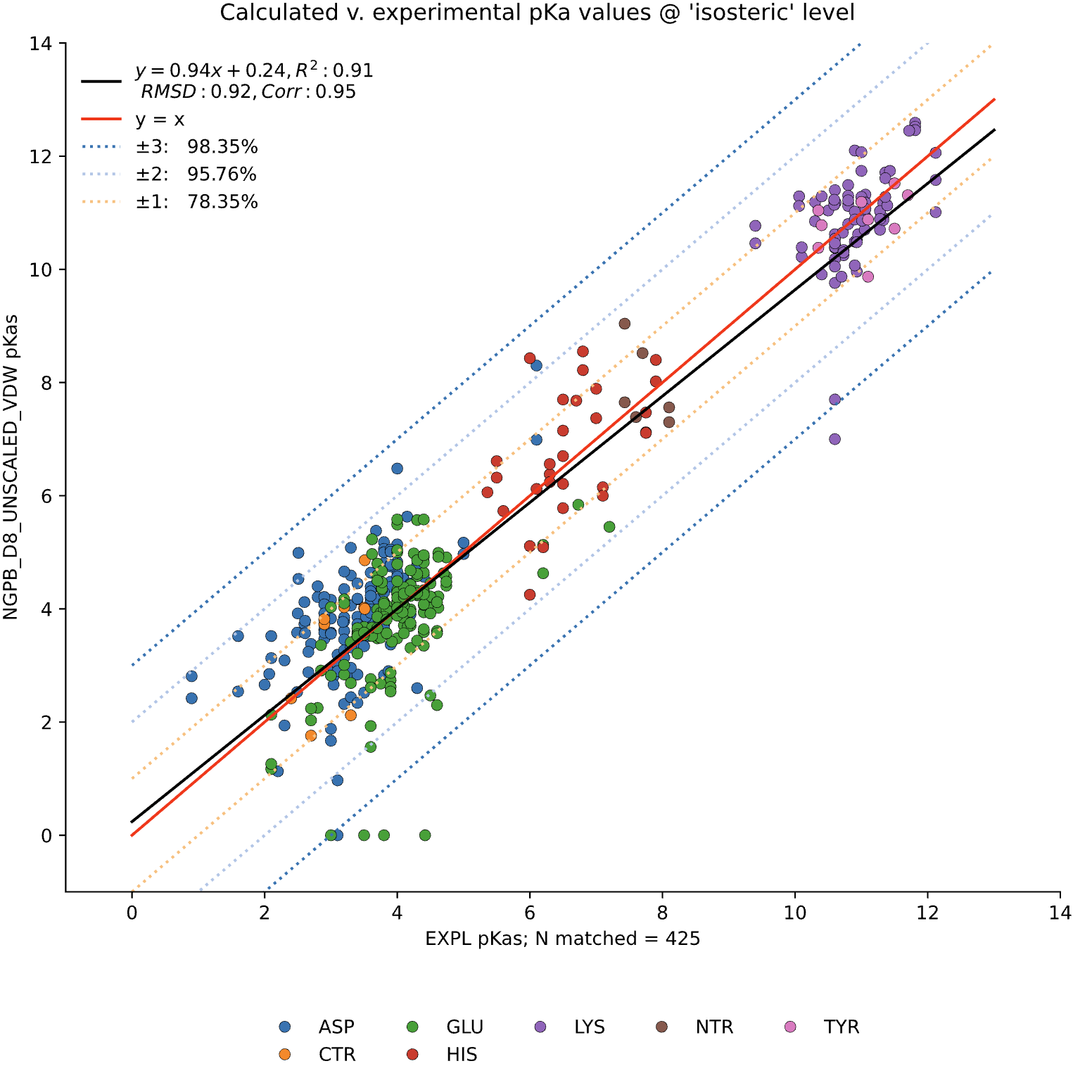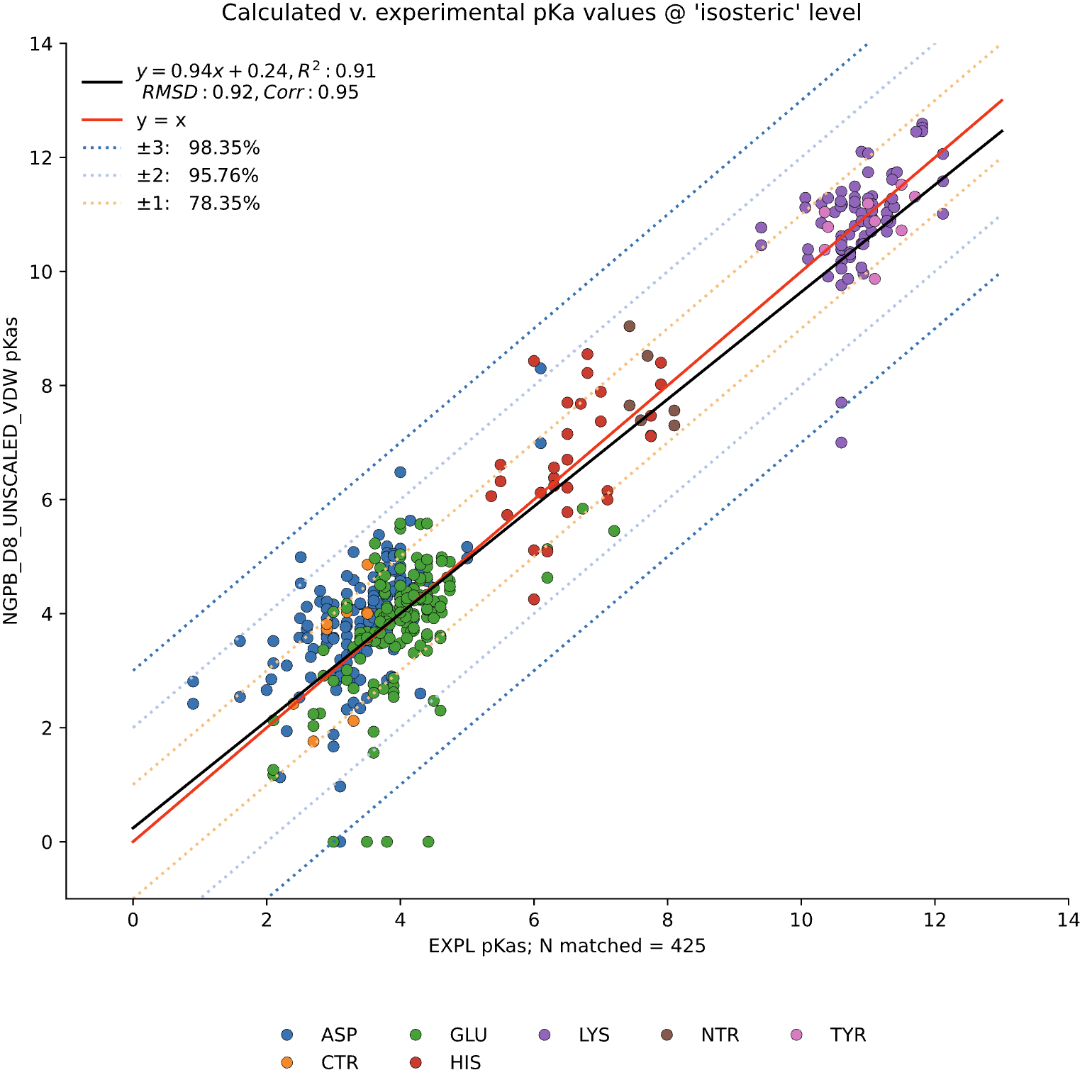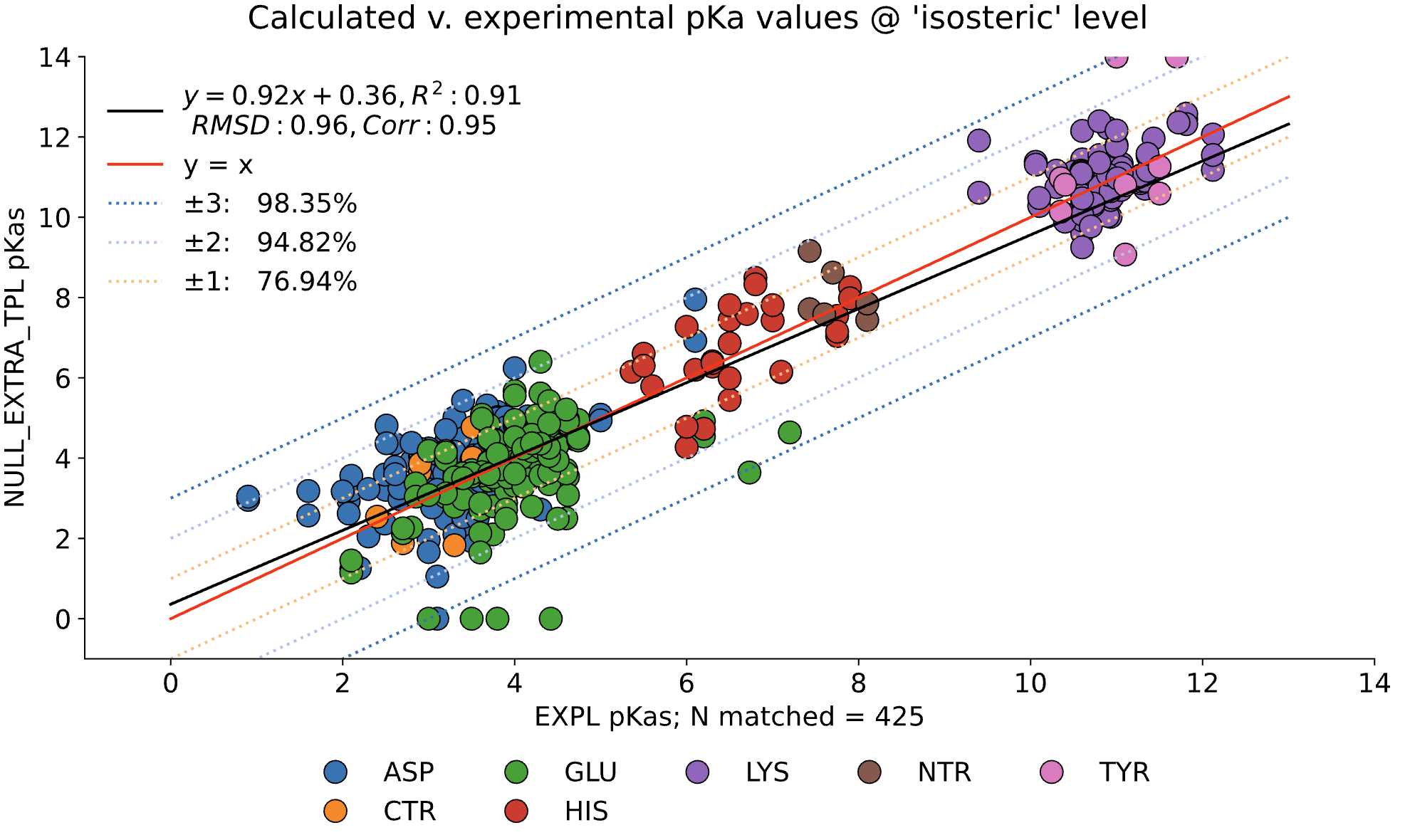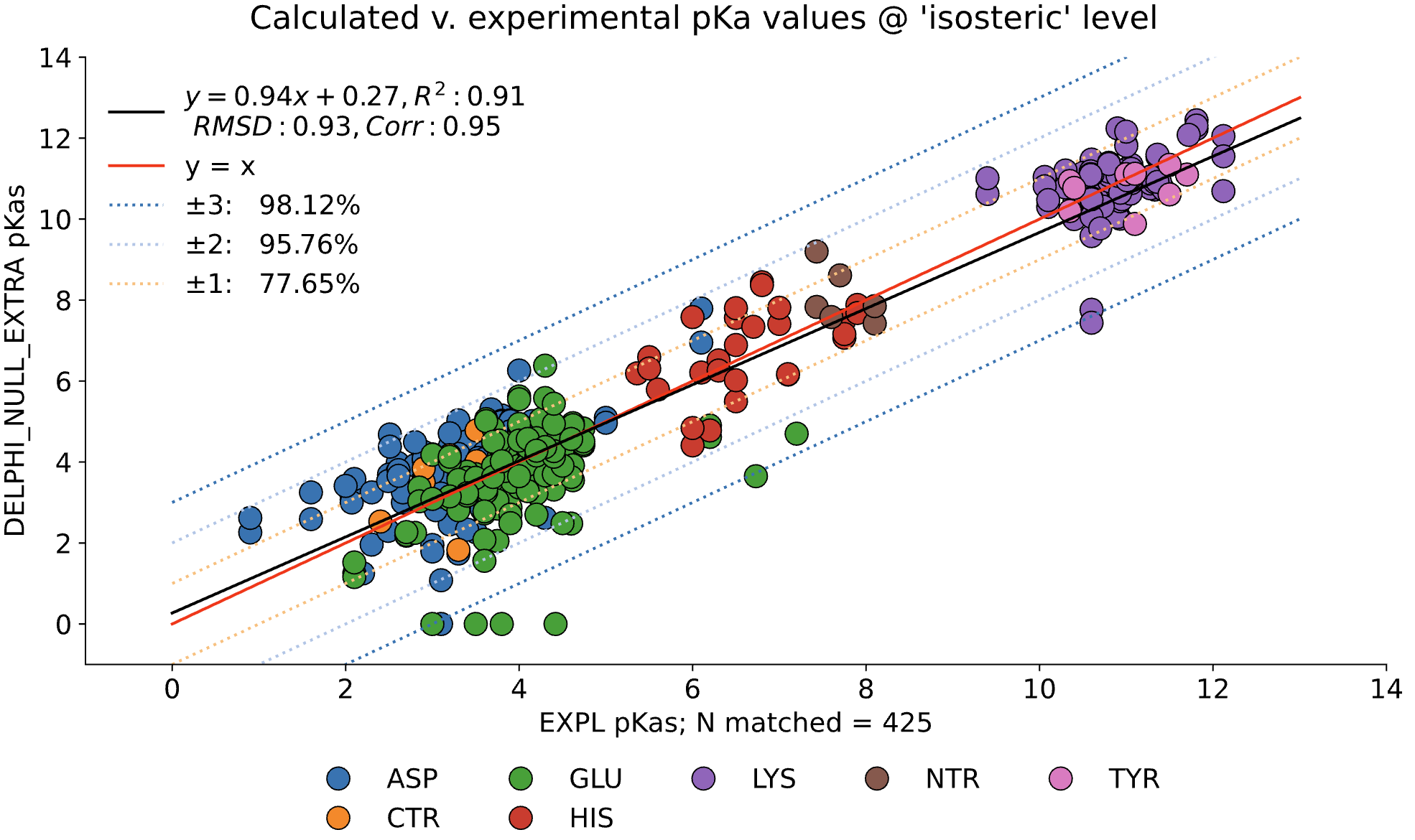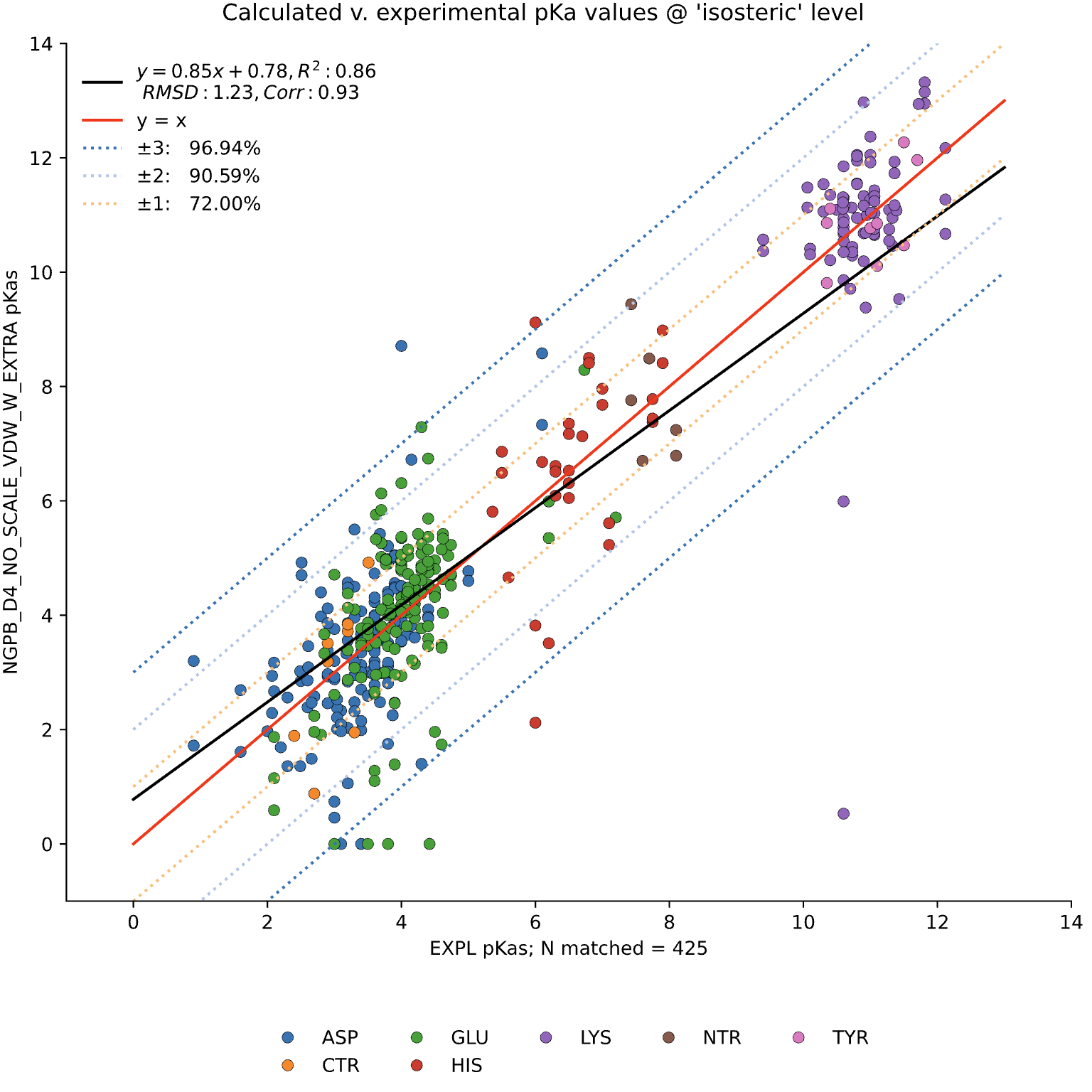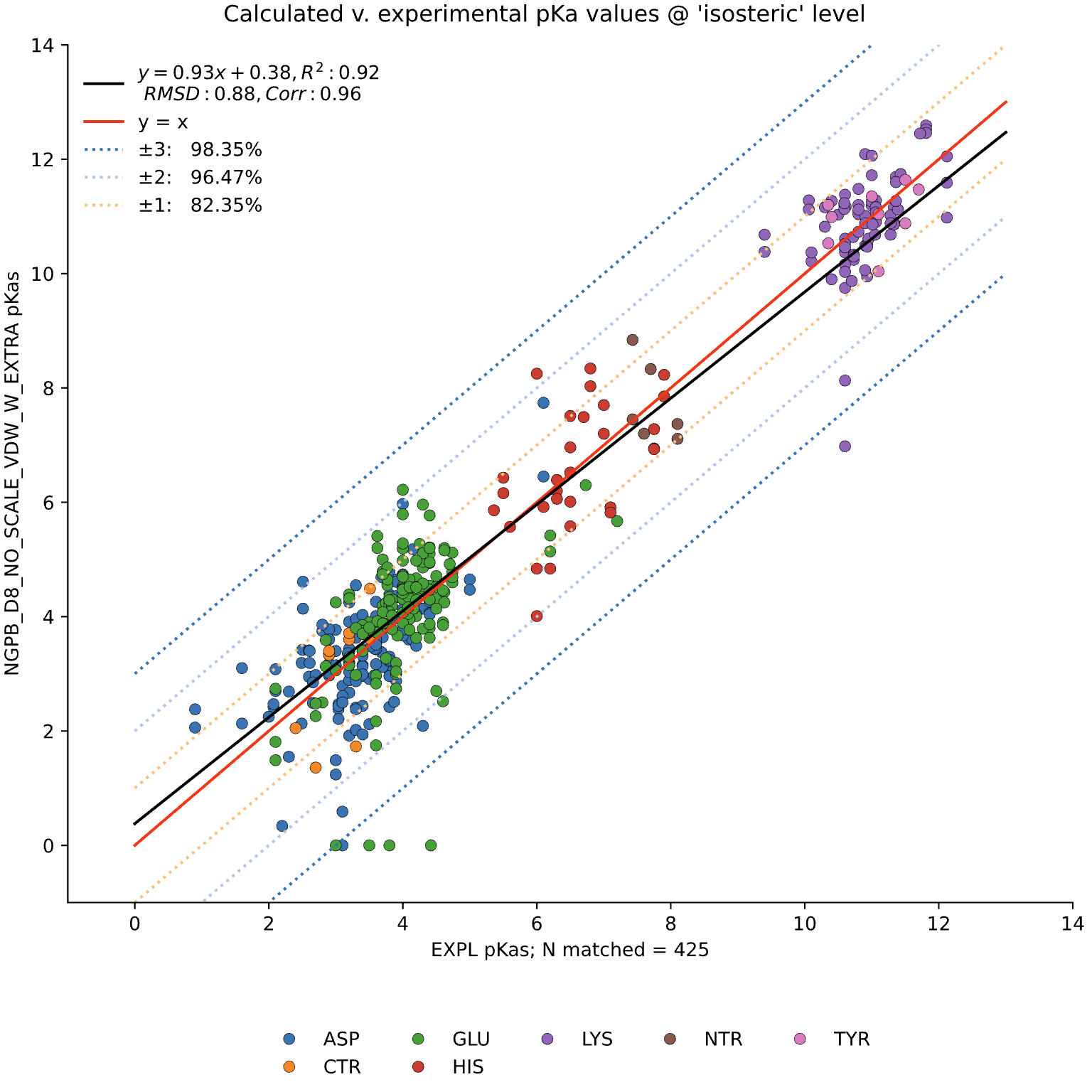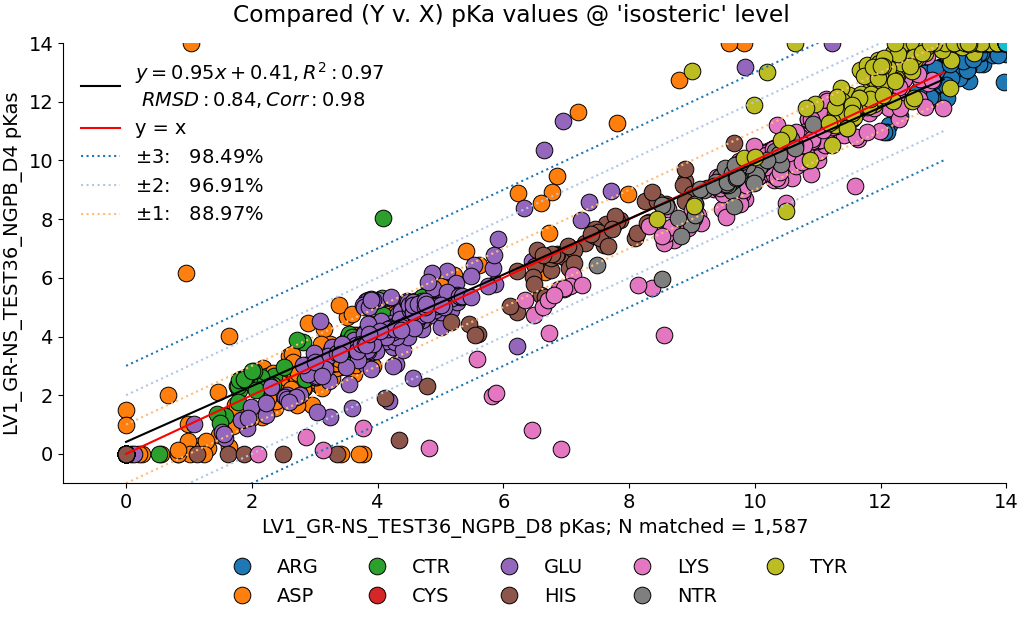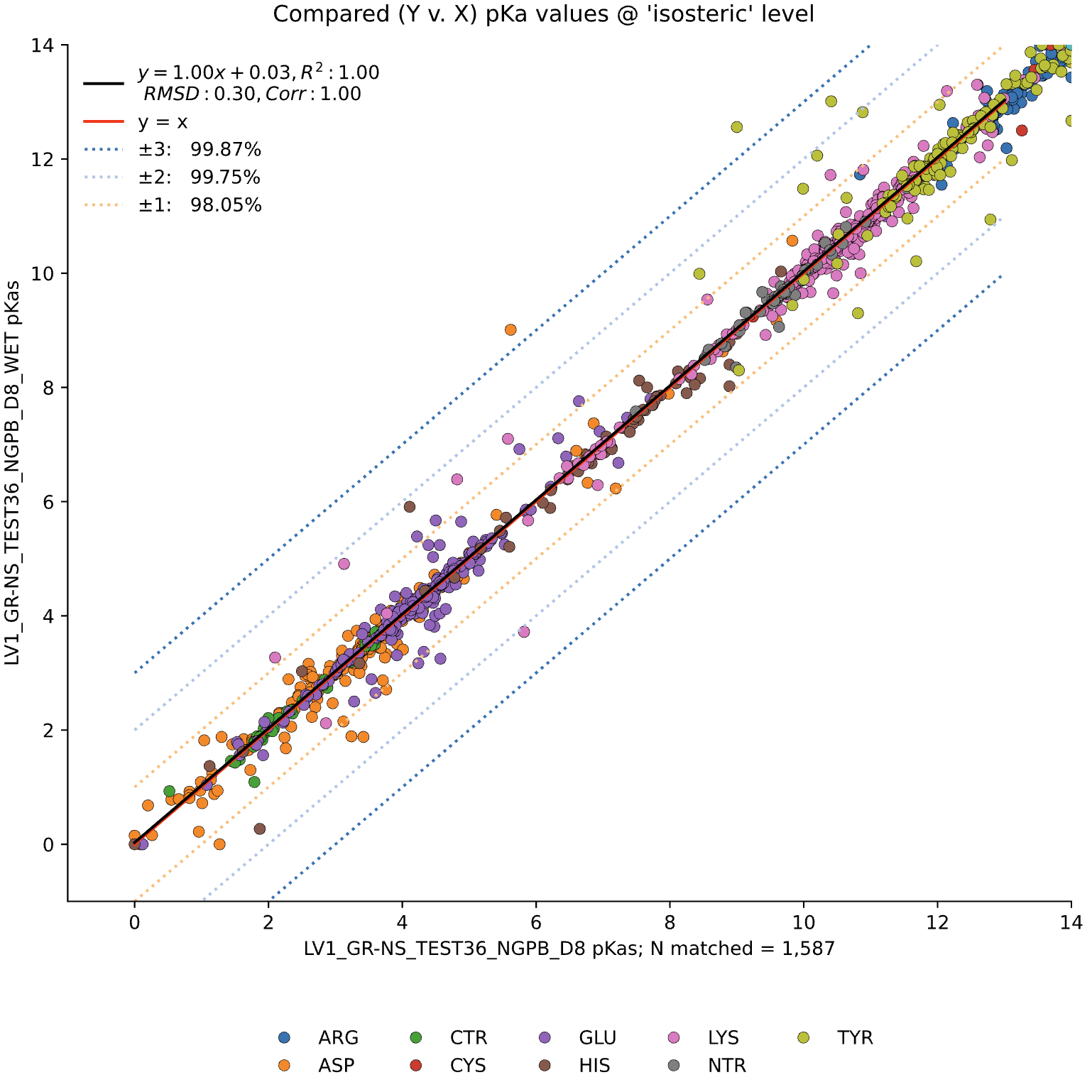How does changing MCCE's parameters change accuracy? (under construction)
MCCE offers a wide range of customizable parameter that influence the accuracy of its pKa predictions. Some major options include varying the internal dielectric constants, numerical Poisson-Boltzmann solvers, Van der Waal functions, and explicit crystal water inclusion/removal (wet/dry). Each of these options or combinatoric assortments of these options can significantly impact MCCE's free energy model, and in turn, affects its pKa predictions. In this study, we systematically evaluate how these parameter choices affect MCCE's calculated pKa values against experimental benchmark values.
Here, we use a set of 36 PDB files sourced from RCSB.org, see PDB Benchmark Files.txt. These PDB files were chosen for their varying sizes, as well as the amount of experimental data available for their residue pKa values. You can find the sources for the experimental pKas in this file: pkdbv1_WT_pkas.csv (change this later to be a citation probably)
Note that the starting and ending residues of protein chains are re-named to NTR and CTR, respectively. At time of writing, MCCE will re-label the first and last residue of a chain, even if the input structure is incomplete.
Accuracy Criteria
Our benchmark dataset consists of 36 PDB files comprising a total of 1,587 residues, of which 425 have experimentally verified pKa values. These serve as the reference for evaluating the accuracy of MCCE’s pKa predictions. To perform this evaluation, we developed an in-house program that runs parallel MCCE simulations across the 36 structures and compares the predicted pKa values to the experimental values.
We define pKa Accuracy as the percentage of predicted pKa values that fall within ±1 unit of the corresponding experimental values. Additionally, we report the root-mean-square deviation (RMSD), noting that it is sensitive to outliers; where appropriate, we assess how removing outliers affects this metric.
The data presented below were generated using the NGPB Poisson–Boltzmann solver with an internal dielectric constant of 8 and our modified, unscaled van der Waals function. Under these conditions, we observed a pKa Accuracy of 82.35% and an RMSD of 0.88.
In this graph the experimental pKa values are on the X-axis and the MCCE-predicted pKa values on the Y-axis. This particular run incorporates extra values, which are residue-type-specific adjustments applied after the initial pKa calculations. These adjustments shift all predicted pKas of a given residue type uniformly up or down to reduce systematic bias. However, it's important to note that while extra values can correct for bias, they do not address the variance within a residue group relative to experimental values.
For comparison, the following graph shows the same dataset without applying extra values. Here, we observe the pKa accuracy was reduced by 4% to 78.35% and an inflated RMSD of 0.92.
Poisson-Boltzmann Solvers
MCCE4 is currently capable of switching between three different Poisson-Boltzmann solvers: ZAP (OpenEye), Delphi, and Next-Generation Poisson (NGPB created by partners in the CONCEPT Lab @ Istituto Italiano di Tecnologia (ITT) in conjunction with Gunner Lab).
Need Figure(s): (include RMSD w and w/o outliers)
Here, we see the pKa accuracy of our three solvers on our testing set. These are dry runs, using D=8, and the newer VDW equations (see below). We have removed all "extra" terms for these graphs. This highlights the consistency of MCCE between the different solvers.
Dielectric Constant
MCCE output shows significant variance depending on the inner dielectric constant (ε). Below, we compare the optimized results from two dry NGPB runs: the left with ε=4 , and the right ε=8. Both runs use unscaled Van der Waals interactions.
The different residue groups are distributed similarly, but the E=4 runs experience a greater variance, especially for the 425 residues with experimental data. Directly comparing these two runs across all 1,587 residues, we find an average delta mean of -.02, and an average absolute delta mean of .42. Let's look at this direct comparison:
Note that the color of each residue is
Wet/Dry Runs
We observed little change in pKa calculation controlling for whether waters were removed from a PDB file.
In this graph, we see minimal changes in pKa calculation between wet and dry runs of NGPB for D=8. Not all of these residues have experimental data- this represents a strict comparison of calculations for each residue between a wet and dry run. For comparison's sake, NGPB has a pKa consistency of 98.05%, NGPB for D=4 has 96.98%, and Delphi for D=4 has 96.85%.
New VDW Raw Information
For your perusal, we include this chart of various runs. The Amino Acid columns are a count of how many pKas were outside of -/+2 units from the experimental- outliers of each residue type.
Residue Totals Across Experimental PDBs
| Res. Totals | ARG | ASP | CTR | GLU | HIS | LYS | NTR | TYR | Sum |
| Num. Res. | 243 | 287 | 56 | 236 | 66 | 378 | 51 | 259 | 1576 |
| Num. Experimental pKas | 0 | 147 | 10 | 147 | 29 | 77 | 6 | 9 | 425 |
Outlier Residues of Various Runs
| Solver | D | Dry? | Level | ASP | GLU | HIS | LYS | NTR | TYR | Sum | RMSD | Adj. RMSD (w/o outliers) |
| Delphi | 4 | Dry | 1 | 10 | 19 | 4 | 2 | 2 | 1 | 38 | 1.34 | .84 |
| Delphi | 8 | Dry | 1 | 7 | 7 | 0 | 3 | 2 | 0 | 19 | .97 | .76 |
| Delphi | 4 | Wet | 1 | 14 | 20 | 4 | 2 | 2 | 1 | 43 | 1.34 | .85 |
| Delphi | 8 | Wet | 1 | 7 | 6 | 1 | 0 | 2 | 0 | 16 | .93 | .76 |
| NGPB | 4 | Dry | 1 | 16 | 15 | 3 | 3 | 2 | 2 | 41 | 1.28 | .8 |
| NGPB | 8 | Dry | 1 | 6 | 6 | 2 | 2 | 2 | 0 | 18 | .95 | .73 |
| NGPB | 4 | Wet | 1 | 14 | 18 | 3 | 4 | 2 | 2 | 43 | 1.3 | .81 |
| NGPB | 8 | Wet | 1 | 7 | 5 | 1 | 2 | 2 | 0 | 17 | .98 | .77 |
| Zap | 4 | Dry | 1 | 24 | 21 | 7 | 4 | 0 | 1 | 57 | 1.43 | .88 |
| Zap | 8 | Dry | 1 | 5 | 8 | 2 | 0 | 2 | 0 | 17 | .95 | .76 |
| Zap | 4 | Wet | 1 | 16 | 19 | 4 | 4 | 1 | 1 | 45 | 1.3 | .82 |
| Zap | 8 | Wet | 1 | 7 | 9 | 2 | 2 | 2 | 0 | 22 | .99 | .74 |
| Delphi | 4 | Dry | 2 | |||||||||
| Delphi | 8 | Dry | 2 | 5 | 13 | 3 | 2 | 2 | 0 | 14 | .88 | .74 |
| NGPB | 4 | Dry | 2 | 15 | 19 | 6 | 3 | 0 | 0 | 43 | 1.7 | .81 |
| NGPB | 8 | Dry | 2 | 6 | 5 | 1 | 1 | 1 | 0 | 14 | .9 | .68 |
| Zap | 4 | Dry | 2 | 21 | 19 | 6 | 1 | 0 | 1 | 49 | 1.31 | .92 |
| Zap | 8 | Dry | 2 | 3 | 9 | 1 | 1 | 1 | 0 | 15 | .88 | .74 |
ARG and CTR residue type data was also collected, but few outliers were found, so their columns were removed for cleanliness. While MCCE is capable of doing wet runs at Level 2, these take a significantly longer amount of time for a low benefit, so few such runs have been performed by the Gunner lab. Note how the D = 4 runs have consistently larger numbers of outliers, and how RMSD also suffers for the category.
Conclusions
In conclusion, we demonstrate that for the used Benchmark PDB files, MCCE represents a robust way to estimate pKa values, showcasing consistency between solvers and other settings and conditions. ZAP remains the fastest option, but for those without a license, NGPB provides good accuracy. For most pKa findings needs, we recommend dry, NGPB runs with D = 8 at Conformer Lvl. 1. If this is not sufficient, try Conformer Lvl. 2.
Special thanks to the National Science Foundation, the Department of Energy, and the City College of New York for making this research possible.

